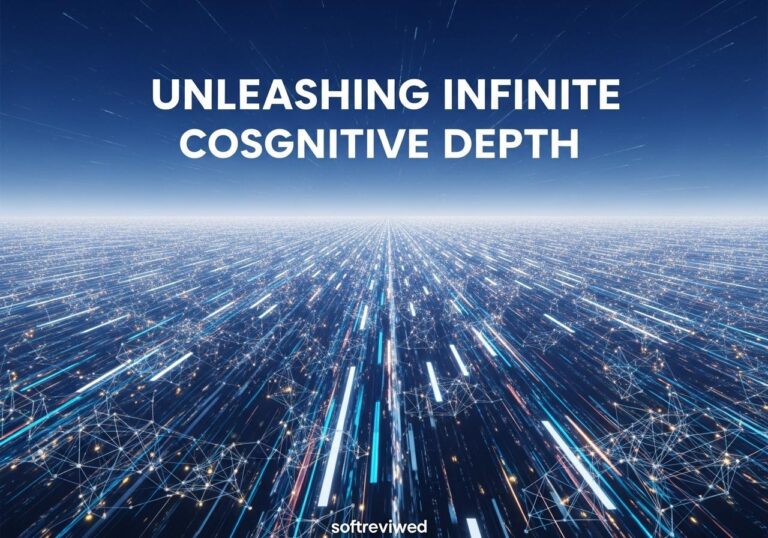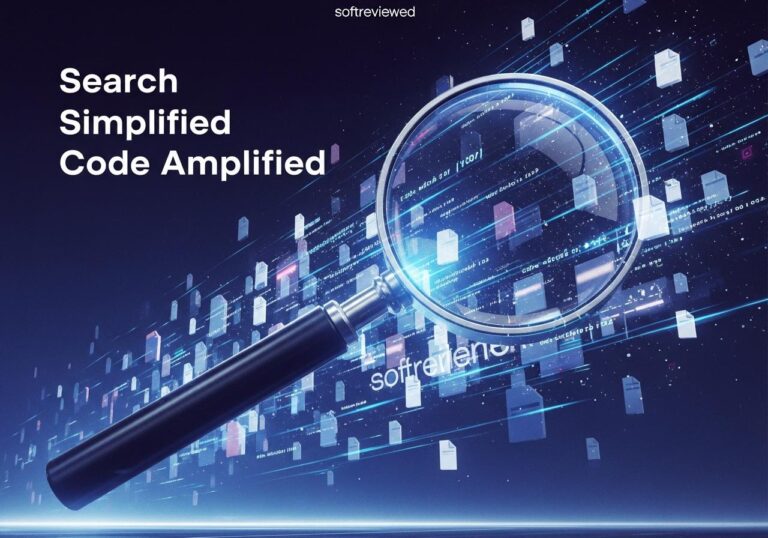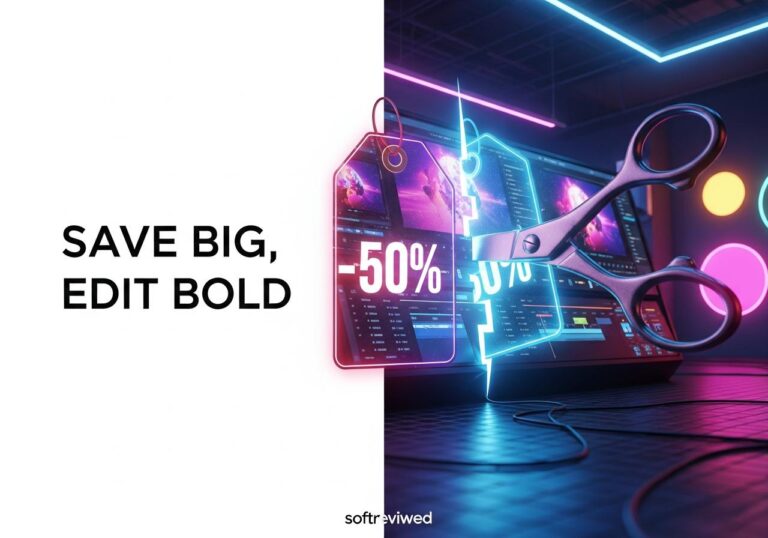🧠 DeepSeek V4: Pushing AI Boundaries
Explore the groundbreaking features of DeepSeek V4 that are transforming AI capabilities with unprecedented context handling and reasoning abilities.
📚 1 Million Token Context Window
DeepSeek V4 supports an industry-leading 1 million token context window, enabling the model to process and understand entire books, codebases, or research papers in a single prompt without losing coherence or context.
🔄 Enhanced Memory Management
Revolutionary memory architecture allows DeepSeek V4 to efficiently handle massive documents while maintaining computational efficiency, reducing the traditional memory bottlenecks associated with large context windows.
🧩 GRPO Reasoning Framework
The Ground-up Recursive Process Optimization (GRPO) reasoning system enables DeepSeek V4 to break down complex problems into manageable sub-problems, solving them systematically with improved logical consistency and accuracy.
📊 Advanced Data Integration
DeepSeek V4 can analyze and synthesize information across multiple documents, creating connections between disparate sources and generating insights that would be impossible with smaller context windows.
⚙️ Technical Applications
Perfect for code analysis, legal document review, scientific research, and any task requiring deep understanding of extensive documentation. The model maintains coherence and relevance even when processing hundreds of pages of information.
The October AI Revolution: DeepSeek V4's Breakthrough
You're about to witness one of the biggest shifts in artificial intelligence this decade. DeepSeek V4, expected to launch in October 2025, isn't just another AI model—it's a complete game-changer that's making industry giants like OpenAI and Google nervous. With its revolutionary 1 million+ token context window and groundbreaking GRPO-powered reasoning, this Chinese AI model promises to process entire codebases, novels, and complex projects in one go.
What makes DeepSeek V4 special isn't just its massive capacity. It's the intelligent combination of cutting-edge technologies: Group Relative Policy Optimization (GRPO) for smarter reasoning, Native Sparse Attention (NSA) and SPCT architectures for lightning-fast processing, and an open-source approach that makes advanced AI accessible to everyone. Let's explore how this technological marvel works and why it matters for your projects.
Breaking Down the Million Token Monster

Think of DeepSeek V4's context window as your AI's working memory. While most current models handle 32K-128K tokens (roughly 24,000-96,000 words), V4's 1 million+ token capacity is absolutely unprecedented. To put this in perspective, you could feed it entire programming repositories, complete research papers, or full-length novels without breaking them into smaller chunks.
This massive context window solves one of AI's biggest limitations: memory constraints. Previous models would "forget" earlier parts of long conversations or documents. DeepSeek V4 maintains awareness of everything you've shared, creating more coherent and contextually accurate responses.
The technical achievement here is staggering. DeepSeek accomplished this through advanced memory optimization techniques and their innovative architecture. While competitors like Gemini and Claude offer 1 million token models at premium prices, DeepSeek's open-source approach makes this capability freely accessible.
GRPO: The Smart Learning Revolution
Group Relative Policy Optimization represents a fundamental breakthrough in AI training. Traditional methods like Proximal Policy Optimization (PPO) require separate "critic" models, making training expensive and complex. GRPO eliminates this need through an elegant solution: group comparison learning.
Here's how it works: Instead of generating one response, the AI creates multiple answers to each question. It then compares these responses within the group, calculating which approaches work better. This self-comparison method is 2-3 times faster than traditional training and uses 50% less memory.
The results speak for themselves. DeepSeek-R1, trained with GRPO, achieved an 80% success rate on AIME math problems while costing just $294,000 to train—compared to OpenAI's estimated $100+ million for GPT-4. This efficiency gain doesn't sacrifice quality; it enhances reasoning capabilities while making AI development more sustainable.
📌 Key GRPO Benefits:
✅ 50% reduction in training memory requirements
✅ 2-3x faster training speeds
✅ Enhanced reasoning accuracy
✅ Self-improving mechanisms without human examples
⛔️ More complex initial setup than traditional methods
NSA and SPCT: The Speed and Efficiency Engine
Native Sparse Attention (NSA) and SPCT (Sparse Computation Technology) represent DeepSeek's answer to the computational challenges of massive models. These technologies work together to make V4 incredibly efficient despite its enormous size.
NSA operates through three parallel attention branches. For any given query, it processes information through compressed attention for broad patterns, selected attention for important details, and sliding attention for local context. This hierarchical approach ensures the model captures both global understanding and fine-grained details without wasting computational resources.
SPCT complements NSA by optimizing how the model uses its parameters. Instead of activating all 671+ billion parameters for every task, it selectively engages relevant experts and pathways. This smart resource allocation means faster responses and lower operational costs.
The practical impact is remarkable. DeepSeek V3 already generates 60 tokens per second—3x faster than previous versions. V4 promises even greater improvements, making real-time applications more viable while reducing infrastructure costs by up to 93% compared to traditional dense models.
Real-World Applications That Matter
DeepSeek V4's capabilities translate into practical benefits across multiple domains. Software developers can analyze entire codebases for bugs, security vulnerabilities, or optimization opportunities without splitting projects into fragments. The model understands architectural relationships and can suggest improvements across multiple files simultaneously.
Content creators and researchers benefit from V4's ability to process complete books, research papers, or documentation sets. You can ask for comprehensive summaries, cross-references, or detailed analyses of lengthy materials without losing context or nuance.
Business analysts can feed V4 complete datasets, reports, and market research for holistic insights. The model's reasoning capabilities help identify patterns and correlations across vast amounts of information that would take human teams weeks to analyze.
Educational applications become more powerful when AI can maintain context across entire courses, textbooks, or learning modules. Students can engage in deep, contextual discussions about complex topics without repeatedly explaining background information.
Comparing the Competition: Why V4 Stands Out
When comparing DeepSeek V4 to current market leaders, the differences are striking. OpenAI's GPT-4 costs $2.50-$10.00 per million tokens and offers limited context windows. Claude 3.5 Sonnet charges $3.00-$15.00 per million tokens with similar limitations. DeepSeek's API pricing sits at $0.07-$1.68 per million tokens—roughly 10-30x cheaper than competitors.
Performance benchmarks show DeepSeek models competing effectively with closed-source alternatives. DeepSeek V3 achieved 82.6% on HumanEval coding benchmarks, outperforming GPT-4o, Claude 3.5, and Llama-3. The upcoming V4 promises even stronger performance with its enhanced reasoning capabilities.
The open-source advantage cannot be overstated. While competitors lock their models behind API walls, DeepSeek provides complete access to model weights and architecture. This transparency enables customization, local deployment, and community-driven improvements that proprietary models simply cannot match.
| Feature | DeepSeek V4 | GPT-4o | Claude 3.5 Sonnet |
|---|---|---|---|
| Context Window | 1M+ tokens | 128K tokens | 200K tokens |
| API Cost (per 1M tokens) | $0.07-$1.68 | $2.50-$10.00 | $3.00-$15.00 |
| Open Source | ✅ Yes | ❌ No | ❌ No |
| Training Method | GRPO | PPO | Proprietary |
| Reasoning Approach | Chain-of-thought built-in | Add-on feature | Limited reasoning |
The Open Source Advantage: Why It Matters
DeepSeek's commitment to open-source development creates unique advantages for users and the broader AI community. Unlike proprietary models that restrict access and customization, DeepSeek provides complete transparency into its architecture, training methods, and parameters.
This openness enables local deployment for organizations with strict data privacy requirements. Companies can run DeepSeek models on their own infrastructure, ensuring sensitive information never leaves their control. The MIT license allows commercial use without licensing fees or restrictions.
Community contributions accelerate model improvements. Researchers worldwide can study, modify, and enhance DeepSeek's architecture, leading to rapid innovation cycles. This collaborative approach has already produced over 700 derivatives and adaptations for specific use cases.
Cost flexibility becomes a major advantage for startups and smaller organizations. Instead of paying per-token fees indefinitely, teams can invest in appropriate hardware and run models locally. For high-volume applications, this approach can save thousands of dollars monthly while providing better performance control.
Educational value increases when students and researchers can examine complete model architectures. DeepSeek's transparency helps advance AI education and research in ways that closed models cannot support.
Technical Implementation and Setup
Getting started with DeepSeek V4 offers multiple pathways depending on your technical requirements and resources. The API approach provides immediate access through simple HTTP requests, perfect for prototyping and low-volume applications. Current pricing for DeepSeek V3.1 models starts at $0.07 per million input tokens, making experimentation affordable.
Self-hosting requirements vary based on your performance needs. The full DeepSeek V3 model requires 8x A100 GPUs with 80GB memory each for optimal performance. However, quantized versions run effectively on 4x A100 GPUs with moderate performance trade-offs. Organizations without dedicated ML infrastructure can use cloud providers like Hugging Face for hosted deployments.
Integration options include REST APIs, Python libraries, and cloud deployment platforms. The model supports standard formats like JSON output, function calling, and chat completion, making it compatible with existing AI application frameworks.
For developers familiar with other LLMs, DeepSeek's implementation follows familiar patterns while offering enhanced capabilities. The context window expansion and reasoning features work transparently, requiring minimal code changes for existing applications.
Performance Benchmarks and Real Results
DeepSeek's performance across standardized benchmarks demonstrates its competitive position against industry leaders. On coding tasks, DeepSeek V3 achieved 82.6% accuracy on HumanEval, outperforming GPT-4o and Claude 3.5. Mathematical reasoning shows similar strength, with high scores on GSM8K and competition-level problems.
Cost efficiency metrics reveal dramatic advantages. DeepSeek's training cost of approximately $5.6 million for V3 compares favorably to OpenAI's estimated $100+ million for GPT-4. This 95% cost reduction enables more frequent model updates and improvements.
Inference speed measurements show DeepSeek V3 generating 60 tokens per second, with V4 promising further improvements. This performance supports real-time applications while maintaining response quality.
Long-context performance tests demonstrate perfect retrieval accuracy across 64K token sequences in needle-in-a-haystack evaluations. The upcoming V4's million-token capacity promises even stronger long-context capabilities.
Real-world user reports confirm benchmark results. Developers praise DeepSeek's coding assistance, researchers appreciate its document analysis capabilities, and businesses value its cost-effective operation for large-scale applications.
Challenges and Considerations
Despite its impressive capabilities, DeepSeek V4 faces several important limitations. Hardware requirements for self-hosting remain substantial, potentially limiting access for smaller organizations. The computational demands of million-token contexts may strain resources even with optimized architectures.
Regional availability presents challenges for some users. Chinese AI regulations and international trade restrictions may affect access or features in certain markets. Organizations should verify compliance requirements before implementing DeepSeek solutions.
Maturity concerns naturally accompany newer models. While DeepSeek has demonstrated strong performance, it lacks the extensive real-world testing and refinement of more established alternatives. Early adopters should prepare for potential issues or limitations.
Language optimization currently favors English and Chinese, with potentially weaker performance in other languages. This limitation may affect international organizations or multilingual applications.
Integration complexity increases with self-hosted deployments. Organizations need appropriate technical expertise to manage infrastructure, updates, and optimization for their specific use cases.
Future Implications and Industry Impact
DeepSeek V4's October release represents more than just another AI model—it signals a fundamental shift in the industry's competitive environment. The combination of open-source accessibility, dramatic cost reductions, and performance parity with premium models challenges existing business models and pricing structures.
Market democratization becomes more achievable when advanced AI capabilities are freely available. Startups and smaller organizations gain access to tools previously reserved for well-funded tech giants. This leveling effect could accelerate innovation across industries and geographic regions.
Research acceleration benefits from open model architectures and training methods. Academic institutions and independent researchers can build upon DeepSeek's innovations without starting from scratch, potentially leading to breakthrough discoveries in AI capabilities.
Enterprise adoption may shift toward hybrid approaches combining open-source models for cost-sensitive applications with premium services for specialized needs. This flexibility allows organizations to optimize their AI strategies based on specific requirements rather than vendor limitations.
Global AI development sees increased competition and innovation as Chinese and other international players challenge Western dominance. This competition benefits users through improved features, lower costs, and more diverse approaches to AI problems.
Your Next Steps with DeepSeek V4
As October 2025 approaches, preparing for DeepSeek V4's impact becomes increasingly important for anyone working with AI. Developers should explore current DeepSeek models to understand their capabilities and integration requirements. Familiarity with the ecosystem will provide advantages when V4 launches.
Businesses can evaluate how million-token context windows might transform their operations. Consider applications requiring long-form document analysis, comprehensive code review, or complex reasoning tasks that current models handle poorly.
Researchers and students should examine DeepSeek's open-source materials to understand cutting-edge AI architectures. The transparency provides learning opportunities unavailable with proprietary models.
Content creators can experiment with current DeepSeek models for complex writing, analysis, and creative projects. The upcoming V4's enhanced capabilities promise even greater assistance for demanding creative work.
The AI field is evolving rapidly, and DeepSeek V4 represents a significant milestone in that evolution. Whether you're developing applications, conducting research, or simply staying informed about technological progress, understanding these advances helps you make better decisions about AI adoption and strategy. The October release promises to make advanced AI capabilities more accessible, affordable, and powerful than ever before.







